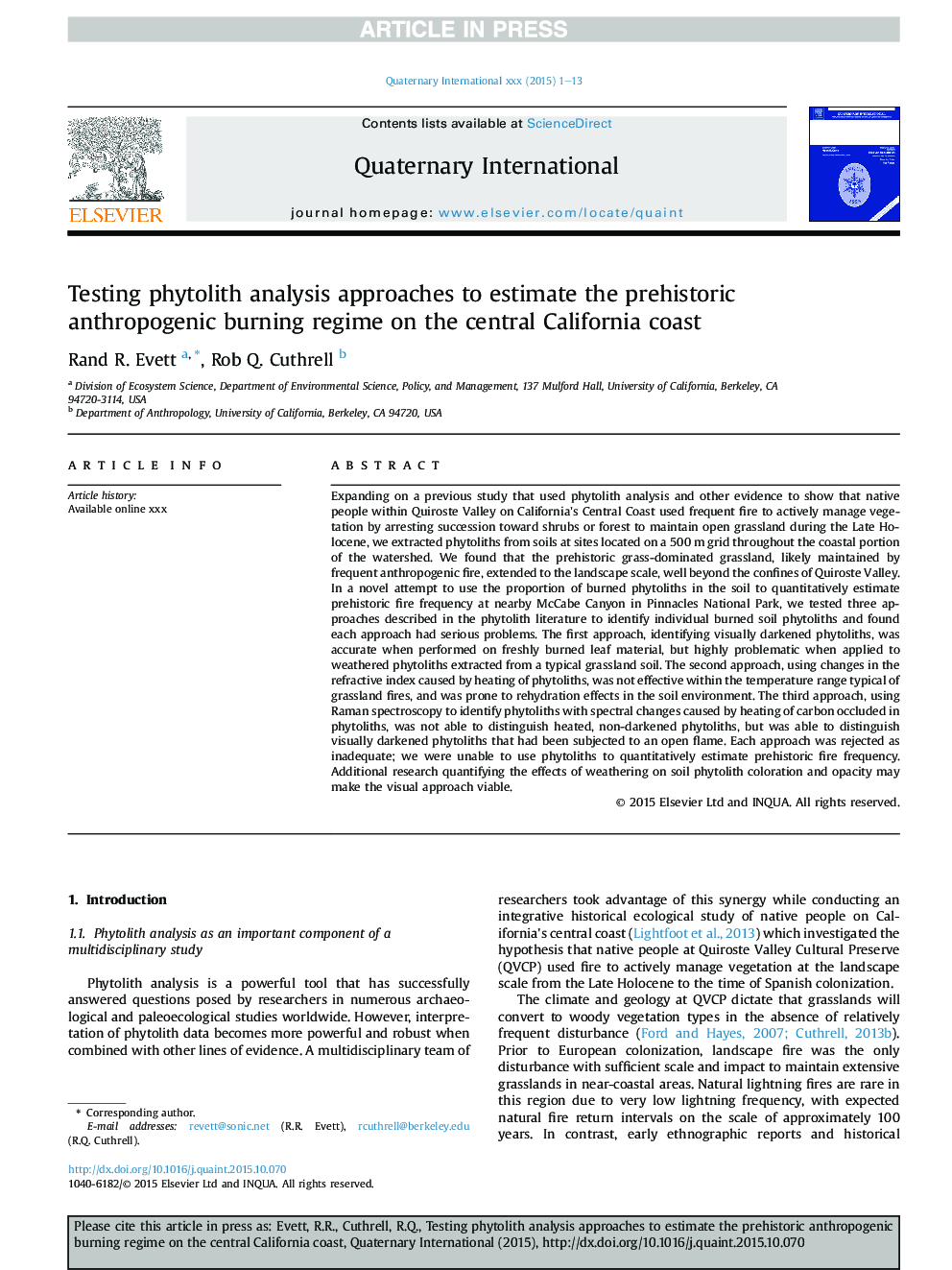| کد مقاله | کد نشریه | سال انتشار | مقاله انگلیسی | نسخه تمام متن |
|---|---|---|---|---|
| 5113687 | 1377945 | 2017 | 13 صفحه PDF | دانلود رایگان |
عنوان انگلیسی مقاله ISI
Testing phytolith analysis approaches to estimate the prehistoric anthropogenic burning regime on the central California coast
ترجمه فارسی عنوان
تست تجزیه و تحلیل فیتولیت روش برای تخمین رژیم سوزی انسان شناسی ماقبل تاریخ در ساحل مرکزی کالیفرنیا است
دانلود مقاله + سفارش ترجمه
دانلود مقاله ISI انگلیسی
رایگان برای ایرانیان
موضوعات مرتبط
مهندسی و علوم پایه
علوم زمین و سیارات
زمین شناسی
چکیده انگلیسی
Expanding on a previous study that used phytolith analysis and other evidence to show that native people within Quiroste Valley on California's Central Coast used frequent fire to actively manage vegetation by arresting succession toward shrubs or forest to maintain open grassland during the Late Holocene, we extracted phytoliths from soils at sites located on a 500Â m grid throughout the coastal portion of the watershed. We found that the prehistoric grass-dominated grassland, likely maintained by frequent anthropogenic fire, extended to the landscape scale, well beyond the confines of Quiroste Valley. In a novel attempt to use the proportion of burned phytoliths in the soil to quantitatively estimate prehistoric fire frequency at nearby McCabe Canyon in Pinnacles National Park, we tested three approaches described in the phytolith literature to identify individual burned soil phytoliths and found each approach had serious problems. The first approach, identifying visually darkened phytoliths, was accurate when performed on freshly burned leaf material, but highly problematic when applied to weathered phytoliths extracted from a typical grassland soil. The second approach, using changes in the refractive index caused by heating of phytoliths, was not effective within the temperature range typical of grassland fires, and was prone to rehydration effects in the soil environment. The third approach, using Raman spectroscopy to identify phytoliths with spectral changes caused by heating of carbon occluded in phytoliths, was not able to distinguish heated, non-darkened phytoliths, but was able to distinguish visually darkened phytoliths that had been subjected to an open flame. Each approach was rejected as inadequate; we were unable to use phytoliths to quantitatively estimate prehistoric fire frequency. Additional research quantifying the effects of weathering on soil phytolith coloration and opacity may make the visual approach viable.
ناشر
Database: Elsevier - ScienceDirect (ساینس دایرکت)
Journal: Quaternary International - Volume 434, Part B, 1 April 2017, Pages 78-90
Journal: Quaternary International - Volume 434, Part B, 1 April 2017, Pages 78-90
نویسندگان
Rand R. Evett, Rob Q. Cuthrell,
